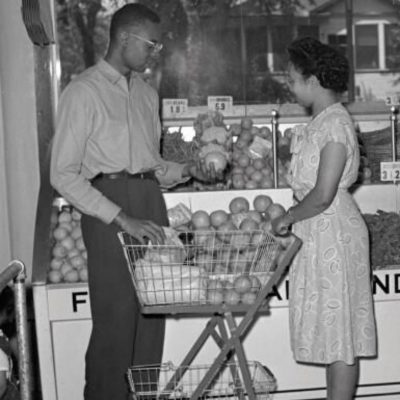March is Banana Month
March means Banana Month at Seward Co-op, so watch for specials and deals on Equal Exchange bananas throughout the month. According to the USDA, the average American eats 26 pounds of bananas per year. That’s a lot of bananas — and a big opportunity for impact. Most bananas are grown on giant plantations as a monoculture with bananas stretching as far as the eye can see. The banana industry is notorious for low wages and heavy chemical use, causing major health problems for humans across banana-producing regions. Together, Equal Exchange and their banana partners are creating a trade model that supports small farmers, builds communities, and supports the environment.
Equal Exchange’s mission is to build long-term trade partnerships that are economically just and environmentally sound; to foster mutually beneficial relationships between farmers and consumers; and to demonstrate, through their success, the contribution of worker cooperatives and fair trade to a more equitable, democratic and sustainable world. Next year is Equal Exchange’s 30th anniversary, and the 10th year of their banana program. Equal Exchange bananas are sourced from small-scale farmers located in Ecuador and Peru. They work with El Guabo cooperative, a farmer-run cooperative with 350 small-scale banana farmers in Ecuador, and The Central Association of Small Producers of Organic Banana (CEPIBO), a group of seven different farmer associations with a total of 800 families operating 900 hectares of land across northern Peru.
Seeing the Equal Exchange brand on a banana (or an avocado) guarantees a customer that their fruit is sourced from a small farmer who receives a fair price for their fruit. It’s not just a better wage, it’s a better way of life. Farmers own their land and are helping to rebuild their own communities through hard work and enterprise. It also guarantees that the grower cooperatives are working directly with the Equal Exchange produce team, rather than through a go-between like the majority of farmers and plantations in the produce industry.
Check out this interesting web documentary called Beyond the Seal that was created by Katherine Nagasawa and Leah Varjacques that talks a lot about Equal Exchange, small farmers, and the banana industry.
Banana Curry Stir Fry Sauce
Ingredients:
2 bananas, peeled and chopped
1 clove of garlic
1 Tbsp. rice vinegar
2 Tsp. curry powder
1 Tsp. agave nectar (or honey)
1 Tsp. onion powder
1 Tsp. coconut oil
3/4 cup unsweetened canned coconut milk
Method:
Combine all ingredients together in a blender and blend to a smooth texture.
Sauté any veggies you have on hand (peppers, onions, carrots, celery, leeks, etc.) until tender. Add the banana curry stir fry sauce and heat through evenly.
Adapted from therawproject.com

